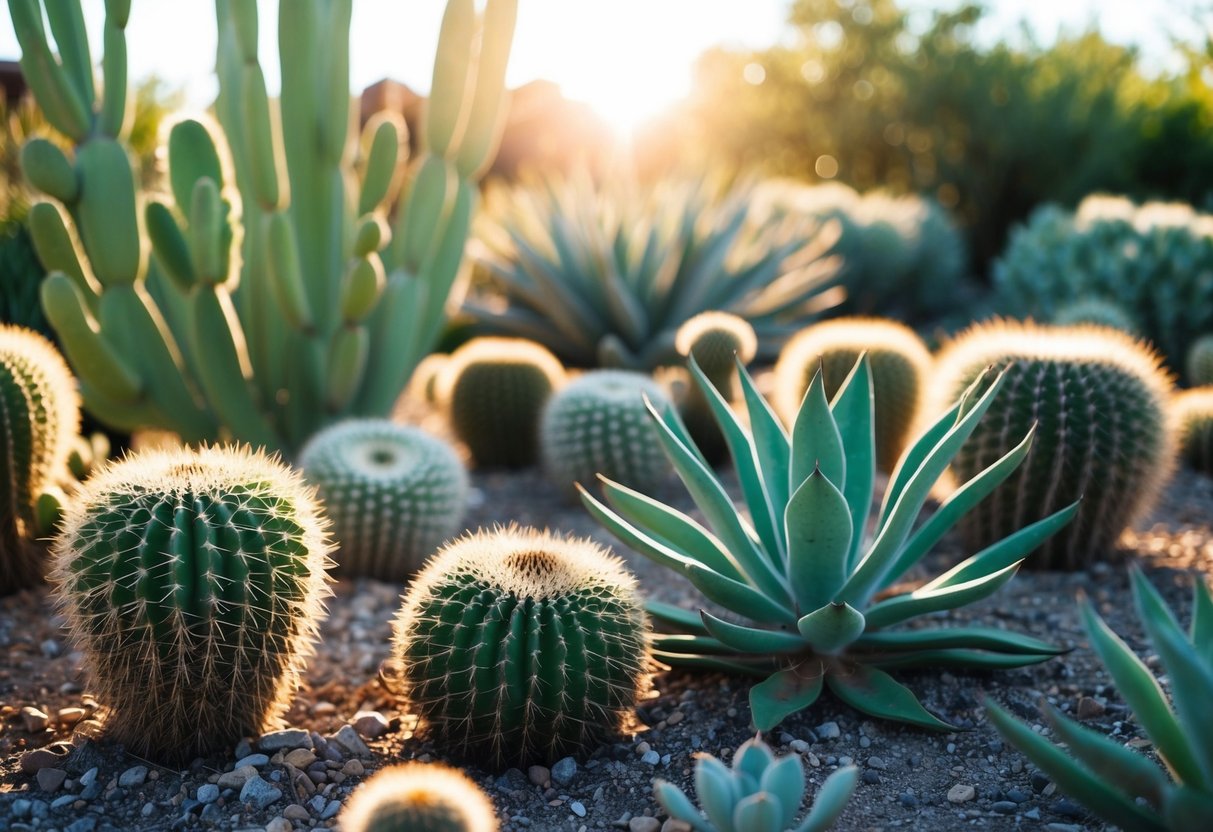
Herbs That Thrive in Arid Climates
Certain herbs have adapted to thrive specifically in arid climates, making them ideal for regions with limited rainfall. Sage is known for its resilience in drought conditions. This herb prefers sandy soils and full sunlight, making it an excellent addition to gardens where water conservation is a priority.
Adapted to prosper in hot, dry environments, these herbs ensure a sustainable approach to gardening. Incorporating such plants not only promotes sustainability but also enhances the garden’s biodiversity without significant water consumption. Their ability to withstand harsh climates represents an important step toward responsible gardening practices.
Groundcovers and Succulents for Dry Areas
In dry regions, selecting drought-resistant plants such as groundcovers and succulents is essential for sustainable gardening. Sedum and Stonecrop are notable for their adaptability, while hardy groundcovers thrive with minimal water.
Sedum and Stonecrop Selections
Sedum and Stonecrop offer versatility for various garden styles, thriving in arid conditions. These succulents store water in their leaves, making them ideal for drought-tolerant landscaping. With many varieties like Sedum ‘Autumn Joy’ and Stonecrop ‘Dragon’s Blood’, gardeners can enjoy colorful foliage and resilience.
They require little maintenance—occasional watering and well-drained soil suffice. Their spreading habit helps reduce soil erosion and suppress weeds. These plants are often used in rock gardens, green roofs, and as groundcovers in borders.
When choosing Sedum or Stonecrop, consider the garden’s sunlight exposure, as some prefer full sun, while others can tolerate partial shade. Combining different varieties can create a visually appealing tapestry of colors and textures.
Hardy Groundcovers for Arid Landscapes
Hardy groundcovers thrive in challenging environments, needing minimal water once established. Portulaca and Ice Plant are popular, known for their vibrant blooms and ability to flourish under harsh sunlight. These plants are not just visually striking but also practical, providing soil stability and weed suppression.
Portulaca, with its stunning blooms, adds color while surviving in nutrient-poor soils. It’s often used in xeriscaping projects. The Ice Plant, popular for its daisy-like flowers, is also valued for its low-growing habit that forms dense mats. Choose these groundcovers to effectively manage water use while enhancing the landscape’s beauty. They are excellent allies in the pursuit of sustainable gardening in drought-prone areas.
Caring for Your Drought-Resistant Garden
Effective care of a drought-resistant garden involves particular strategies that address water scarcity and pest management. These methods not only sustain plant health but also promote an eco-friendly gardening approach.
Irrigation Techniques for Drought Conditions
In regions where water is scarce, efficient irrigation is essential. Deep watering encourages roots to extend further into the soil, enhancing plant resilience. This can be achieved by watering less frequently but more thoroughly, ensuring that water penetrates deep into the root zone.
Drip irrigation is another effective technique, minimizing water waste by targeting only the base of plants. It reduces evaporation and directs water to where it is needed most. Using mulch helps retain soil moisture, further reducing the need for frequent irrigation and promoting a sustainable gardening practice.
Dealing with Pests and Beneficial Insects
Pest management is crucial in maintaining plant health without increasing water needs. Encouraging beneficial insects such as ladybugs and praying mantises naturally controls pest populations. These insects consume pests that might otherwise damage plants.
Integrated Pest Management (IPM) combines biological control with minimal chemical intervention. This approach promotes a balanced ecosystem in the garden. When chemicals are necessary, selecting those that target specific pests while sparing beneficial insects maintains ecological harmony and prevents water contamination.